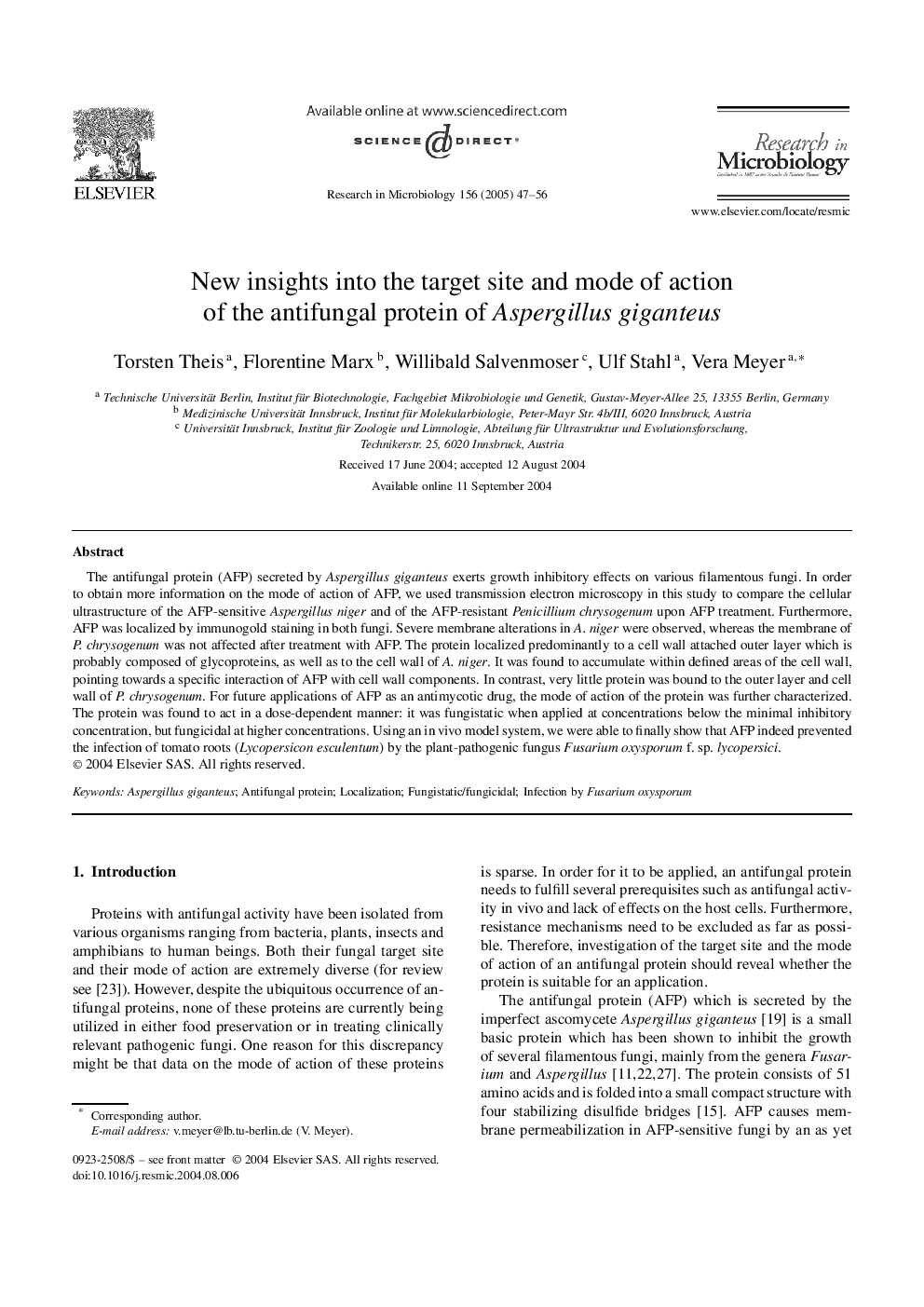| Article ID | Journal | Published Year | Pages | File Type |
|---|---|---|---|---|
| 9440215 | Research in Microbiology | 2005 | 10 Pages |
Abstract
The antifungal protein (AFP) secreted by Aspergillus giganteus exerts growth inhibitory effects on various filamentous fungi. In order to obtain more information on the mode of action of AFP, we used transmission electron microscopy in this study to compare the cellular ultrastructure of the AFP-sensitive Aspergillus niger and of the AFP-resistant Penicillium chrysogenum upon AFP treatment. Furthermore, AFP was localized by immunogold staining in both fungi. Severe membrane alterations in A. niger were observed, whereas the membrane of P. chrysogenum was not affected after treatment with AFP. The protein localized predominantly to a cell wall attached outer layer which is probably composed of glycoproteins, as well as to the cell wall of A. niger. It was found to accumulate within defined areas of the cell wall, pointing towards a specific interaction of AFP with cell wall components. In contrast, very little protein was bound to the outer layer and cell wall of P. chrysogenum. For future applications of AFP as an antimycotic drug, the mode of action of the protein was further characterized. The protein was found to act in a dose-dependent manner: it was fungistatic when applied at concentrations below the minimal inhibitory concentration, but fungicidal at higher concentrations. Using an in vivo model system, we were able to finally show that AFP indeed prevented the infection of tomato roots (Lycopersicon esculentum) by the plant-pathogenic fungus Fusarium oxysporum f. sp. lycopersici.
Related Topics
Life Sciences
Immunology and Microbiology
Applied Microbiology and Biotechnology
Authors
Torsten Theis, Florentine Marx, Willibald Salvenmoser, Ulf Stahl, Vera Meyer,
